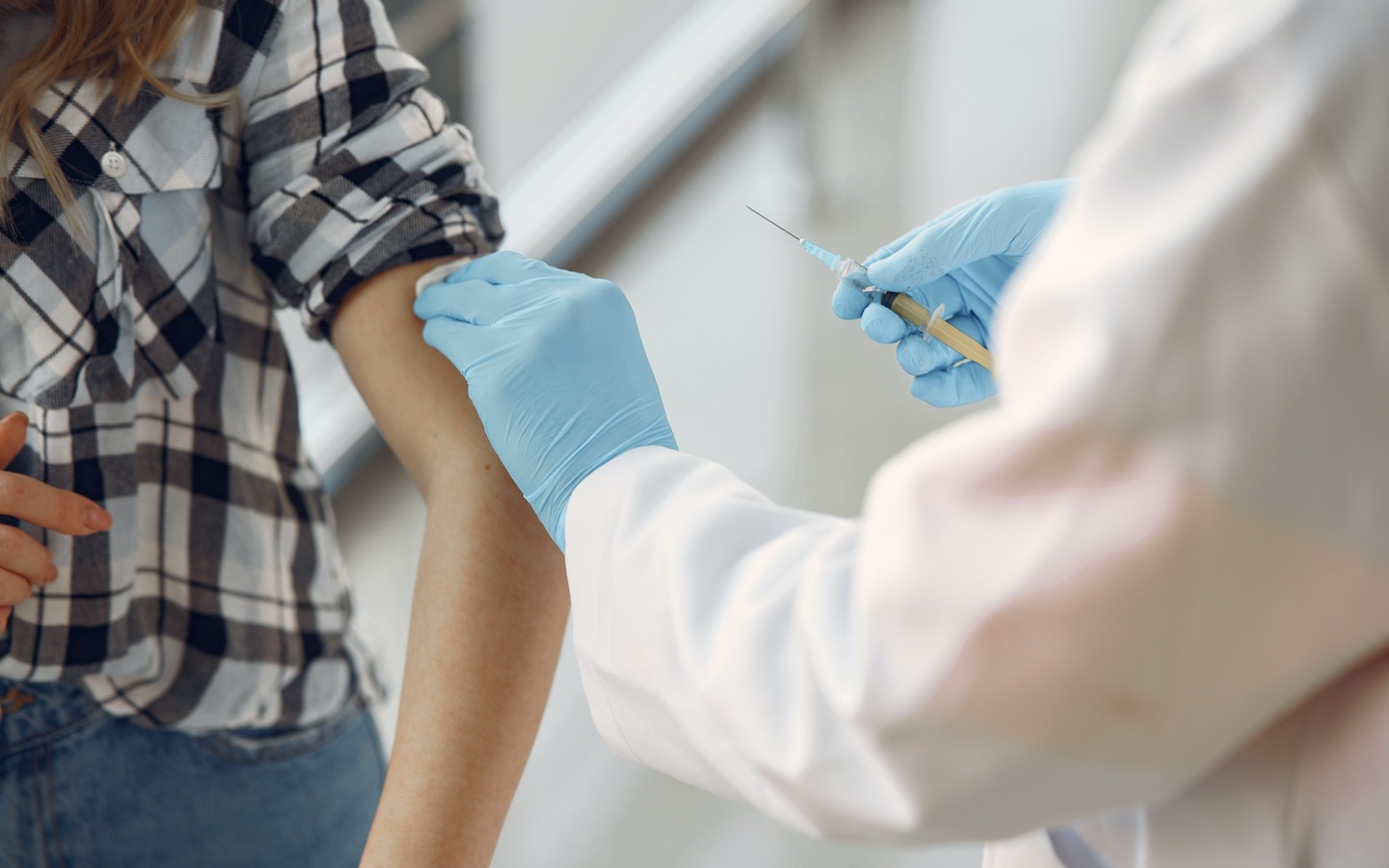
As travelers return from Thanksgiving gatherings and report new cases of COVID-19, Illinois is bracing for a new wave of cases. The spike comes during peak flu season, a trend that worries experts like Dr. Bedrija Nikocevic.
Students who didn’t get the measles shot as children, Nikocevic adds, are also at higher risk if they fall behind on vaccinations as young adults.
“With many students living on campus during the pandemic, there is an increased risk of spreading measles among unvaccinated patients,” said Nikocevic, an assistant professor of clinical sciences at Roosevelt University. “This disease is known to spread at a higher rate among those living in close quarters.”
Nikocevic teaches pharmacy students in the College of Science, Health and Pharmacy. She wrote an article for the Pharmacy Times about immunization administration during the pandemic.
AN OMINOUS DECLINE IN CHILD VACCINATIONS
In April and May 2020, the Centers for Disease Control and Prevention (CDC) described a sharp decline in children’s vaccinations during the pandemic. Nikocevic writes that this is likely due to “stay-at-home orders in many states, which inadvertently decreased access to vaccines for many children.”
A recent article in Time painted a grim portrait of the situation.
“Staying up-to-date on all vaccines is extremely important during a pandemic,” said Nikocevic. “Many of these diseases could progress to the point where patients may require hospitalization, which would place additional strain on the health care system.”
Influenza cases often rise in October and peak between December and February. In a typical year, the flu sends hundreds of thousands of people to the hospital, and the CDC says that delayed flu and measles shots could lead to “patient harm.” Both illnesses add significant risk for COVID-19 patients.
PHARMACISTS AND THE COVID-19 VACCINE
Patients have depended on community pharmacies for immunizations since the early 2000s. During the H1N1 pandemic in 2009, pharmacists administered approximately 5.5 million vaccine doses — an enormous total that doesn’t include crucial co-administered vaccines such as pneumonia and Tdap.
“This historical context shows that pharmacists can have a significant role in the eventual rollout of COVID-19 vaccine,” said Nikocevic.
Roosevelt pharmacy students train on vaccine administration as soon as they enter the program. By the end of their first term, students receive their Immunization Certificate, which allows them to participate in public health initiatives early in their careers.
In the last five years, about 60% of Roosevelt pharmacy graduates chose to work in community pharmacies, where many patients receive their immunizations, while others pursued residencies or different career tracks.
Nikocevic pointed to a CDC study that showed, with the support of retail pharmacies, the U.S. could increase weekly vaccine administration to 25 million doses a week. This would cover about 80% of the population in seven weeks.
The U.S. Department of Health and Human Services recently announced that patients older than three years of age can now be immunized at pharmacies. The government also outlined a plan to partner with pharmacies to increase access to the COVID-19 vaccine.
“Community pharmacists have the potential to significantly impact COVID-19 vaccination rates,” said Nikocevic. “They are the most accessible health care providers — a vast majority of Americans live within a 5-mile radius of a pharmacy.”
She added that, during the H1N1 pandemic, “pharmacists showed that they can significantly improve immunization rates. I expect to see that outcome again with the COVID-19 pandemic.”
MAKING PHARMACIES SAFER FOR FLU AND MEASLES SHOTS
Nikocevic says that the coronavirus and PPE shortages have added extra risks to immunizations. In the Pharmacy Times, she suggested changes to make flu and measles shots safer at pharmacies:
- Scheduling appointments for vaccines.
- Using electronic consent forms.
- Collecting paperwork in drive-thrus.
- Administering vaccinations “curbside.”
- Patients waiting for immunization services in their cars, instead of indoors.
In an ideal world, she says, pharmacies would make all of these changes, but many require additional staff.
“Most chain pharmacies only have one pharmacist on duty at a time,” said Nikocevic. “That pharmacist is responsible for verifying the prescriptions, speaking to physicians, counseling patients, and supervising all of the technicians, in addition to administering immunizations. Extra time for these duties needs to be built in between the appointments.”
ABOUT THE DOCTOR OF PHARMACY PROGRAM
The Roosevelt University Doctor of Pharmacy program is the first accelerated PharmD in the Midwest. With rigorous, patient-centered courses, you’ll be ready to join the health care team, providing evidence-based pharmaceutical care in all practice settings. Join our community of competent, committed and compassionate pharmacists. Explore the program.